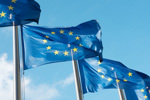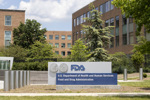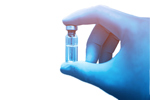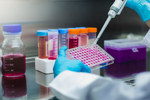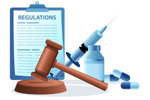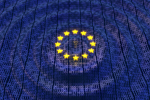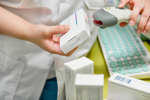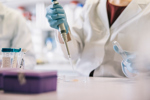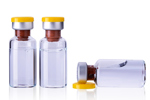-
What 2025 FDA Warning Letters Tell Us About GMP Compliance
This analysis identifies key compliance trends and regional disparities by examining the 2025 U.S. FDA warning letters issued to drug product manufacturers posted between Jan. 1 and Dec. 9, 2025.
-
Product Carbon Footprints: The Next Frontier In Sustainable Innovation
Product Carbon Footprints reveal true lifecycle emissions, enabling collaboration, innovation, and informed decisions. Learn why moving from estimates to evidence is essential for reducing Scope 3 impact.
-
Unpacking The EU's Mutual Recognition Agreements For Pharma
MRAs can save resources for regulators and drug makers by, among other things, reducing the number of inspections and waiving retesting requirements.
-
Speed Meets Precision With Process Development Services
Explore strategies to accelerate biosimilar development that help manufacturers reduce timelines, optimize workflows, and meet regulatory standards while delivering cost-effective therapies.
-
Here's What You Need To Know About The Access Consortium Pathway
Five nations are collaborating on a work-sharing program to reduce regulatory duplication in drug development.
-
FDA Draft Guidance On CES Signals More Reliance On Toxicity And PK
The technology to measure alternative metrics is vastly improved. Now, FDA joins other regulators in deprioritizing comparative efficacy studies for biosimilars.
-
Maximizing The Value Of An Internal Audit Program In Pharmaceutical Quality Operations
A shrinking FDA and rising supply pressures demand stronger risk management and smarter internal audits. Here’s how pharma can truly “see things as they really are.”
-
Phages As A Pharmaceutical: New EMA Guidance On Antimicrobial Drug Development
The EMA has now issued a draft guidance on quality aspects of phage therapy medicinal products. Rising antimicrobial resistance has renewed interest in bacteriophages to fight pathogens.
-
Process Validation: Working Toward Harmonization Of Terms Used To Identify Validation Lots
The terms “confirmatory" and "conformance" batches are inconsistently used in the industry. Since process validation is essential for maintaining compliance and detecting variability, we must work toward harmonization of the terms to avoid confusion.
-
Pfizer's Accord For A Healthier World Program Challenges Stability Study Norms
The company developed a novel approach to address the historic lack of stability testing for underserved parts of the world, near the equator.
-
Takeda Reimagines Biopharma Quality For The Digital Age
Artificial intelligence, even in its current form, is especially good at synthesizing large data sets. Here's how one company makes the most of it.
-
Streamline Process Development, Digitize Data, And Maximize Your Investments
Discover how AI, digital twins, and automation are transforming biomanufacturing by cutting costs, improving quality, and accelerating timelines for smarter, more efficient production.
-
100% U.S. Drug Tariffs: Implications For Pharma And Outsourcing
Research Manager Mathini Ilancheran explores the effects of U.S. drug tariffs on global supply chains, multinational pharma firms, and critical partners across drug development.
-
What Can The Tech Sector's 'Minimally Viable' Concept Teach Biopharma?
Deciding what is good enough to get started can support the mindset of building something without sacrificing quality, functionality, or safety.
-
Import Product Specifications And Drug Registration Testing For China
This overview and its recommendations are valid for drug registration testing (for marketing authorization application in China) as well as import testing (for commercial batches to be imported to China after approval).
-
What You Should Know About USP's Bioassay Updates
The United States Pharmacopeia is overhauling general chapters to align them with current industry standards. One scientist on the project helps us unpack the changes.
-
Automation In The Lab: Lessons From Successes And Setbacks
Real-world examples show that, in some labs, manual screenings disappeared altogether, replaced by automated runs that now cover entire departments.
-
A Risk-Based Approach To Plasmid DNA And mRNA Process Development
Balancing robust analytics and clinical readiness is key for early-phase pDNA and mRNA therapeutics amid structural complexity and regulatory challenges.
-
Take Action On PFAS To Protect Your Critical Processes
PFAS restrictions are tightening, but a full ban could disrupt critical industries lacking alternatives, such as pharmaceutical manufacturing. Learn where PFAS use remains indispensable.
-
Why FDA's Tough Talk On Foreign Inspections Is More Bark, Less Bite
FDA Commissioner Marty Makary has promised to end the so-called "double standard" of announced overseas inspections. Does the agency have the resources?
-
What Are PFAS And How Do They Impact The Biotech Industry?
Forever chemicals pose rising health risks and regulatory challenges. Learn how increasing restrictions on fluorinated compounds could reshape manufacturing, packaging, and sustainability strategies.
-
A Case Study In Continuous Process Verification
CPV can strengthen the bridge between compliance and continuous improvement. In this scenario, a hypothetical lab sets out to improve process yields and efficiency.
-
Navigating The Regulatory Space To Biosimilar Approval
The biosimilar patent cliff is reshaping pharma, creating unprecedented opportunities for biotech and CDMOs. Explore expert regulatory support that can help you navigate this shift with confidence.
-
EMA Issues Revised Annex 11, New Annex 22, And Associated Documents On Data Governance
The EMA issued three new draft documents in July, all related to the advancement of the use of electronic technology in GMP: AI, computerized systems, and documentation. The public comment period ends Oct. 7.
-
Overcoming Gene Therapy Cost Roadblocks On The Path To Patients
Viral vector-based gene therapies are expanding beyond rare diseases to treat larger populations. Discover how innovations in manufacturing are making these life-changing treatments more accessible.
-
Viral Gene Therapy: Reducing Costs To Improve Patient Access
Gene therapy is revolutionizing medicine with its potential to cure genetic disorders. As approvals rise, so do concerns about accessibility, with million-dollar price tags limiting patient access.
-
3 Key Considerations In Gene Therapy Manufacturing
Viral vector-based gene therapies are redefining medicine. As developers navigate uncharted territory, Sybil Danby of Cytiva highlights three critical areas shaping the journey from discovery to patient access.
-
Preparing For FDA's Expanded Use Of Unannounced Inspections At Foreign Manufacturing Facilities
The FDA announced on May 6, 2025, that it intends to expand its use of unannounced inspections at foreign manufacturing facilities. Here are key considerations and actions to take in order to be prepared.
-
Managing Extractables And Leachables In HPAPI Manufacturing
These contaminants can compromise the quality, stability, and safety of a drug product, and regulatory bodies mandate assessment to protect patients.
-
Audit Trail Compliance And What To Look For In Mitigation Software
In the pharma/biotech and medical device industries, the audit trail is important to have for accountability, data integrity, repeatability to create an event for investigation, and regulatory compliance.
ABOUT BIOSIMILAR REGULATIONS
The first biosimilar was approved for the European market in 2006. While the regulatory pathway for biosimilars in the U.S. was created as part of the Affordable Care Act in March 2010, the first biosimilar was only recently approved for the U.S. market in March 2015.
Biosimilars are essentially generic versions of large molecule biologics. However, the fact they are not exact copies of the reference product makes establishing regulations for their approval and release to market a more complicated process. The WHO, along with many other parties in the pharmaceutical industry, has argued that regulations governing the development and approval of small molecule generics are not appropriate for more complex biological medicines. As such, the WHO set out to establish regulations articulating the efficacy, safety, and quality standards biosimilars must meet and maintain to make it to market. These regulations specify that a biosimilar must prove its biosimilarity to a reference product through head-to-head comparisons. The biosimilar company must also submit non-clinical and clinical studies data and a pharmacovigilance plan to the appropriate regulatory body. Those navigating the landscape of current biosimilars regulations face the challenge of demonstrating a biosimilar’s safety, purity, efficacy, and potency.
The current U.S. Food and Drug Association (FDA) and European Medicines Agency (EMA) regulations for biosimilars require these biologic copies to undergo extensive analytical chemistry, manufacturing, and control (CMC) and clinical processes to prove similarity to the reference product. However, in comparison to the originator biologic, a biosimilar could see an accelerated approval process, as it might need less data to meet the established regulations. The EMA was the first regulatory authority to establish marketing regulations for biosimilars in 2005. Other countries including Australia, Canada, Japan, Korea, and South Africa have since turned to the EMA’s regulations, as well as the WHO’s regulations, as a model for crafting their own regulations. In 2012, the FDA released three draft guidances to assist biosimilar developers in demonstrating their product’s biosimilarity. To comply with existing U.S. regulations, manufacturers are expected to include structural analysis, functional assays, and data from animal and human clinical trials in their applications. As biosimilar production spreads globally, regulations have continued to shift and evolve. Currently, each governing body has differing definitions/terminology for biosimilars, and as such, has established varying regulations dictating what studies and data are needed to be approved for the market.
BIOSIMILAR DEVELOPMENT NEWS
- Alvotech Announces European Launch Of First-In-Market Biosimilar To Simponi® (golimumab) Globally By Partner Advanz Pharma
- Alvotech And Teva Secure U.S. Settlement Date For AVT06, A Proposed Biosimilar To Eylea®
- Zydus And Formycon Enter Into An Exclusive Partnership For The Licensing And Supply Of Biosimilar To Keytruda® (Pembrolizumab), In US And Canada
- Celltrion Receives Positive CHMP Opinion For SteQeyma (ustekinumab Biosimilar) Autoinjector
- Lupin Receives Positive CHMP Opinion For Biosimilar Ranibizumab
- Biocon Biologics Signs Settlement And License Agreement To Commercialize Biosimilar Aflibercept Worldwide
- Golimumab Biosimilar Gotenfia From STADA And Bio-Thera Receives Positive CHMP Opinion
- Chime Biologics Announces Strategic Collaboration With Beijing Libang Pharmaceutical On Global Blinatumomab Biosimilar Program



